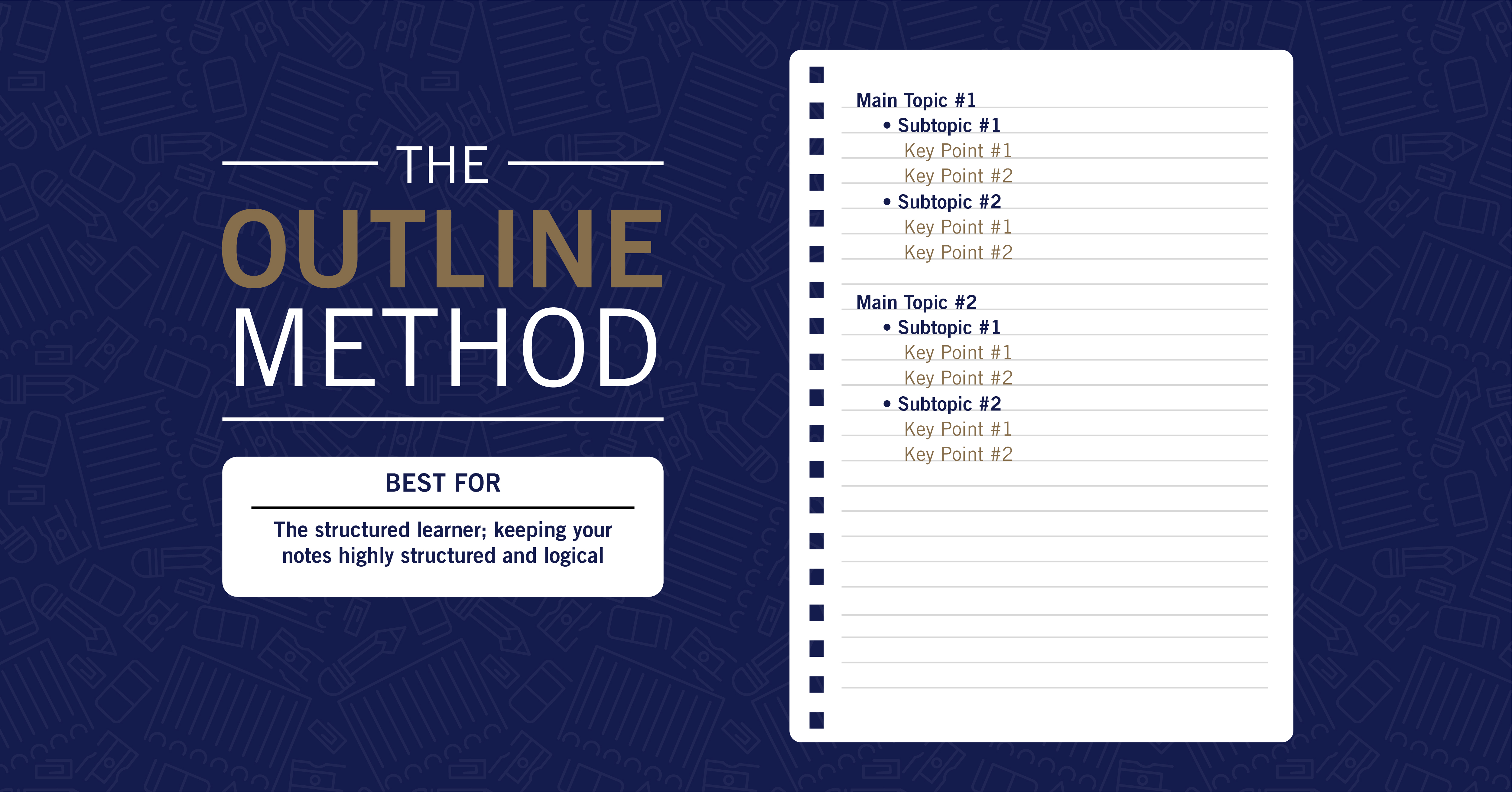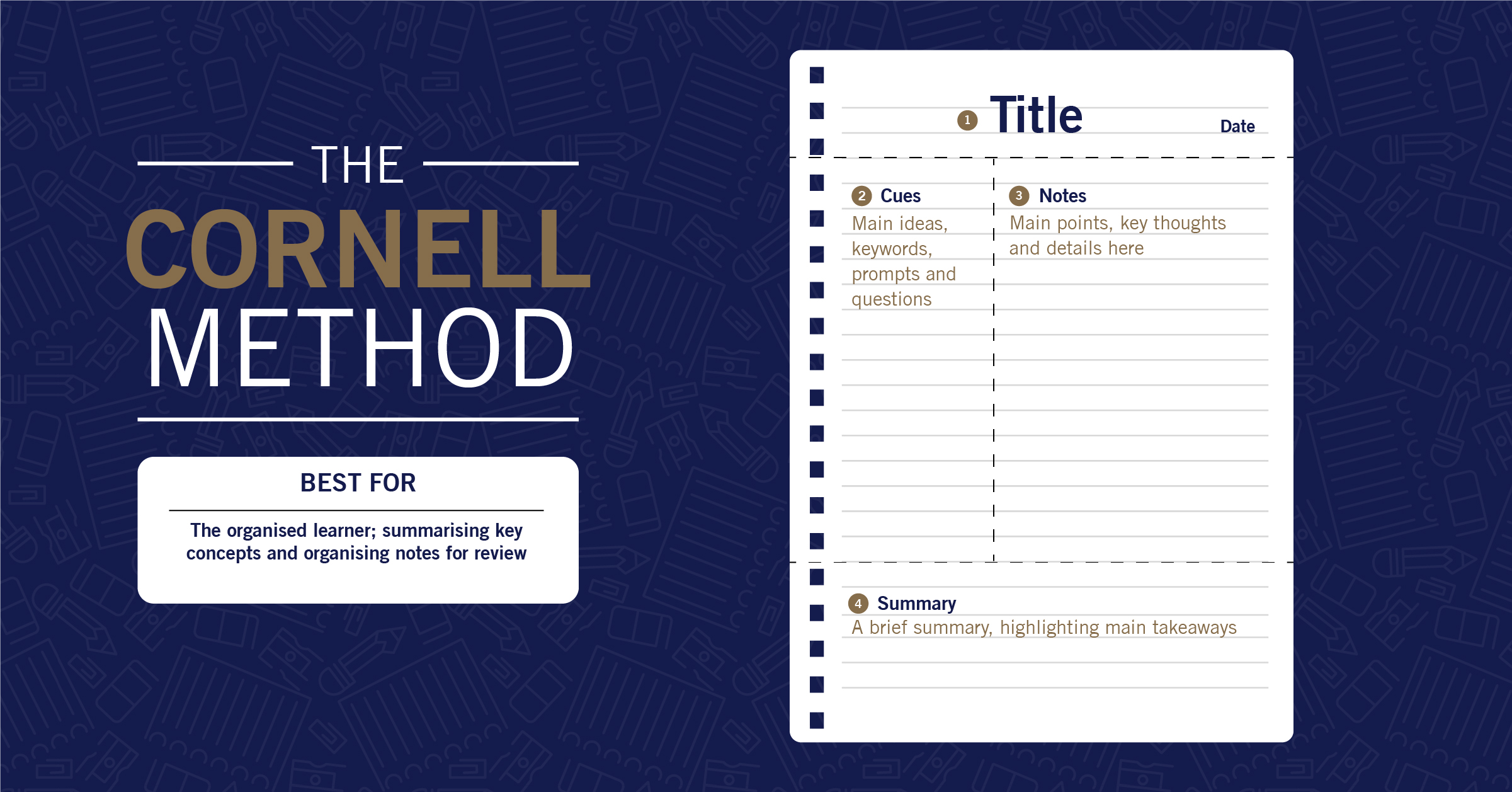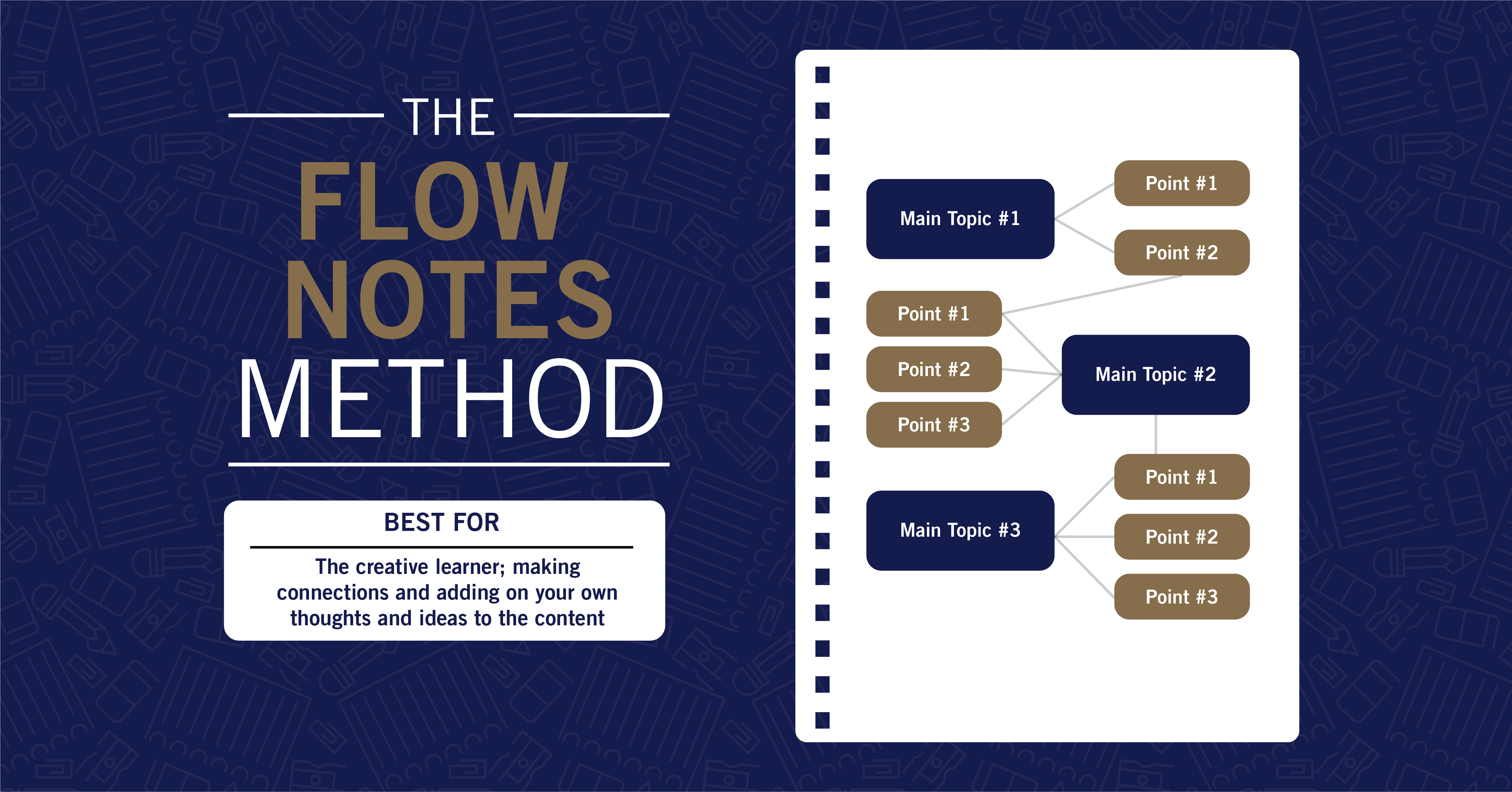
Taking notes is essential not just in the classroom, but also at the workplace. The art of note-taking is a valued skill among the world’s most successful people. Take self-made billionaires Bill Gates and Richard Branson for example – they are avid note-takers and swear by note-taking to keep their thoughts and ideas organised. Studies have also shown that taking down your notes, whether by pen and paper or a stylus and tablet, is better than typing for substantive processing and conceptualising of information over the long term. When it comes to learning, a thorough note-taking process turns you from a passive learner into an active one; allowing you greater comprehension, better visualisation and focus, retention and enables you to continue building on what you have learned.
There is no one-size-fits-all note-taking strategy and finding the right one for yourself would require trial and error. But whether you are looking to develop a habit of taking notes or improving your current practices, here are some of our best tips to become an effective note-taker.
Tip #1: Find the right tools that work best for you
The first step to building your note-taking skills is to find the tools that suit your needs, whether it be the tried and tested method of pen and paper or a digital device.
Handwritten notes are highly effective when it comes to retention. A growing body of evidence shows that handwriting forces the learner to process and condense the material, resulting in overall conceptual understanding and retention of new information. You can also personalise and have fun taking down your notes by using colours to highlight notes, and doodle to make connections.
If you prefer to bring technology into the classroom, there is no shortage of free note-taking apps available online, from Microsoft OneNote to Evernote to Google Keep. Digitally handwritten notes enjoy the benefits that come along with using technology - allowing you accessibility, portability, and extensive editing capabilities - all without giving up on the benefits of writing down your notes. Keep in mind that a tablet is not the only way to take notes in a digital format. You can also use pen-to-paper digital solutions like smart pens, a high-tech writing tool that allows you to digitise your handwritten notes.
Tip #2: Choose the note-taking style that suits you
Great note-taking takes practice. You have to find a method that works for you. Here are some of our favourite strategies that you might want to consider adopting:
The Outline Method:

This method is one of the easiest methods of note-taking. The Outline Method involves following a hierarchical structure for your notes by using heading and bullet points to organise the topics. Start with the main topics on the far left of the sheet and keep adding subtopics as bullet points.
Best for: The structured learner; keeping your notes highly structured and logical
Pros: Follows a logical and structured approach, and is easy to use
Cons: Might not always show the relationship between ideas and concepts by sequence
The Cornell Method:

The Cornell method was developed by Cornell Education Professor, Walter Pauk and follows a systematic format for condensing and organising your notes into digestible summaries. Using the Cornell method, you divide your page into four parts. One row at the top for title and date, a margin on the left for cues, the space on the right for all the key details and information, and a summary at the bottom. This method aims to make note-taking faster with the dedicated space for the different types of information.
The Cues section is where you place all the main ideas, keywords and questions devoted to helping you recall the larger topics and ideas. The Notes section helps to expand and explain the cue points. This is where you fill out the main points, key thoughts, and details. The pro-tip here is to try rephrasing and using abbreviations rather than lifting word-for-word. The Summary section is where you can include a summary of the lesson, highlighting your main takeaways in 2 to 3 sentences.
Best for: The organised learner; summarising key concepts and organising notes for review
Pros: Very organised and systematic, helps you extract main ideas at a glance. It also encourages you to reflect on your notes actively
Cons: Requires preparation beforehand
The Mapping Method:

In this method, the notes are split into branching graphs which help make visual connections between the topics like a mind map. It is an effective and useful strategy for visual learners. Begin by placing the main topic at the top and then add on the subtopics, details, key points onto the page, using arrows and lines to show the relationship between the different concepts.
Best for: The visual learner; establishing and visualising the relationship between topics or concepts
Pros: Visually engaging and can be used to map a large amount of information
Cons: Can get cluttered and confusing
The Flow Notes Method:

The Flow Method allows you to create notes as you understand the content and not just according to what is being said. It is also a creative process where you can add on your ideas and connections. While it shares many similarities to the Mapping method, there is less organisation and hierarchy. Start by writing out the main ideas, in your own words, on the page. Remember to leave ample space at the beginning so that when you find a connection between two ideas or concepts, you can use arrows and lines to connect them. Remember, the goal of the flow method is to understand what you have been taught and learn to make it your own.
Best for: The creative learner; making connections and adding on your own thoughts and ideas to the content
Pros: Interactive and engaging, encourages active learning
Cons: Unorganised and tricky to review later
There is no one effective way to take notes, it’s about what suits you. Depending on your learning style and preferences, each method has its own advantages. It is also worth noting that you can use a combination of the methods listed here to complement your needs and figure out what works best for you.
Tip #3: Be prepared and intentional
Effective note-taking starts before the class begins. Make sure you have your tools. Keep organised to help you find information more easily later. You can do this by titling your page with the name of the course you are taking, the topic that you will be learning about as well as the date. Read through class materials beforehand to familiarise yourself with key concepts that will be discussed, this will help you focus on what is noteworthy.
Some methods like the Cornell Method also require you to prepare beforehand. With the groundwork out of the way, it will be easier to concentrate on listening.
Tip #4: Note the essentials to complement your learning
It’s easy to just start scribbling down everything that you are hearing but note-taking is a deliberate process. While we all want our notes to be as thorough as possible, keep your focus on the trainer over writing down everything that is said. Attempting to write everything down makes you less likely to process the information. It will also be more challenging to edit and organise your notes later on.
Take notes to complement your direct learning - listen out for key points, jot down questions, and note the concepts and pieces of information you want to research further. Try to simplify the sentences and summarise as you go along as this would help you process and check your understanding. Keep a lookout for cues that indicate certain information is important. If the trainer emphasises a point, repeatedly brings up a list for example, it is probably worth noting it down.
Tip #5: Review your notes while it’s still fresh
How often have you taken a course and remembered most of what you learned afterwards? Probably never. This is why reviewing and revisiting your notes at frequent intervals is our most important tip. Learning does not end once the lesson is over. Set aside time to review your notes, ideally within 24 hours of making them. Some studies suggest that we forget approximately 70% of new information within a day and 90% of what we learn within a week. This is known as the forgetting curve, a mathematical formula presented by German Psychologist, Hermann Ebbinghaus, which shows how new information can fade over time if we make no attempt to retain it.
Going over your notes at frequent intervals after class will help reinforce concepts and immensely improve memory retention. Through this practice, you can also make new correlations, mark ideas that you missed during the class, and draw connections to previous notes. Your notes will only be as effective as you let them be.
Make it Your Own
Now that you have gotten our best tips on taking notes, focus on making your method work for you. As you continuously develop and upskill yourself, try out the different methods of note-taking in your next classes and share with us how you made it work for you!
SMU Academy offers a comprehensive array of cutting-edge interdisciplinary programmes that suit professionals from different industries, equipping them with practical skills, knowledge, and expertise to thrive in the future of work. Explore over 800 programmes taught by leaders and industry veterans and find the right course that will set you up for success.
